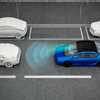
Automated driving systems are safety-critical cyber-physical systems whose safety of the intended functionality (SOTIF) can not be assumed without proper argumentation based on appropriate evidences. Recent advances in standards and regulations on the safety of driving automation are therefore intensely concerned with demonstrating that the intended functionality of these systems does not introduce unreasonable risks to stakeholders. In this work, we critically analyze the ISO 21448 standard which contains requirements and guidance on how the SOTIF can be provably validated. Emphasis lies on developing a consistent terminology as a basis for the subsequent definition of a validation strategy when using quantitative acceptance criteria. In the broad picture, we aim to achieve a well-defined risk decomposition that enables rigorous, quantitative validation approaches for the SOTIF of automated driving systems.
翻译:自动驾驶系统是安全关键的物理与计算系统,其预期功能的安全性不能仅通过适当的证明来假定。最近关于驾驶自动化安全标准和法规的进展,都旨在证明这些系统的预期功能不会将利益相关者暴露在不合理的风险中。在本文中,我们批判性地分析了ISO21448标准,该标准包含对如何显式验证SOTIF的需求和指导。在使用量化验收标准时,强调建立一致的术语,以便后续定义验证策略。 总体上,我们旨在实现一个定义明确的风险分解,以便为自动驾驶系统的SOTIF进行严格的量化验证方法提供支持。

